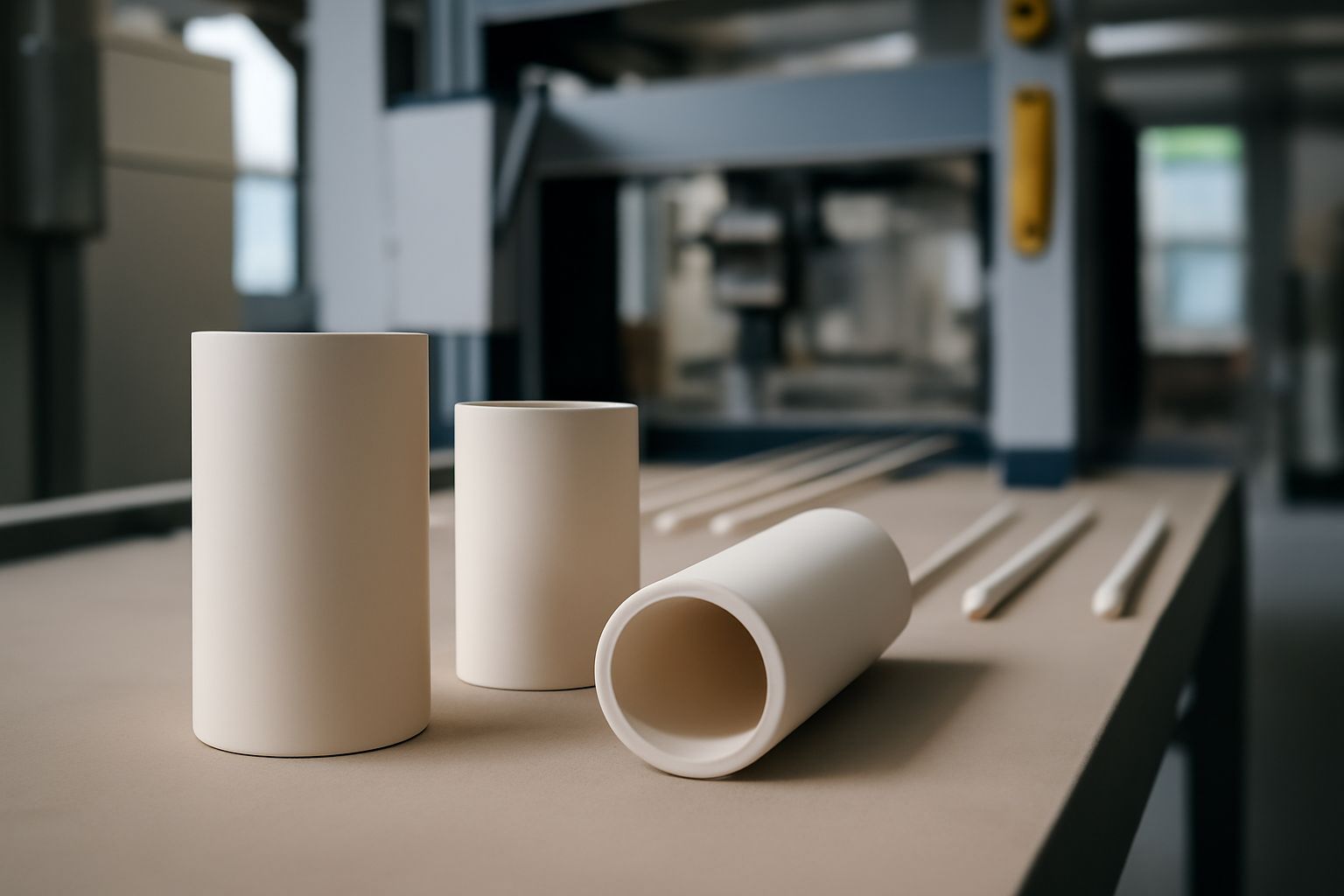Understanding each production workflow delivers buyers clear insight into supplier capability and quality risk. Below, we clarify forming, densification, machining, and ISO-based inspection steps for alumina tubes and rods.

What Are the Main Steps in Alumina Ceramic Processing?
The manufacturing of alumina ceramic tubes and rods follows a sequence of powder preparation, forming, drying, sintering, and finishing, each vital to the final product’s performance. In my operations, precision starts with selecting high-purity alumina powder, ensuring the batch meets strict chemical and particle-size specifications. Mixing and milling further homogenize the powder and binders, and every raw lot is double-checked for moisture and granulation uniformity. After shaping—via extrusion or isostatic pressing—pieces are carefully dried to prevent microcracking. Sintering at up to 1600°C then densifies the ceramics to over 98% theoretical density, yielding crucial mechanical strength and dielectric properties. The sequence below displays these core steps:
| Stage | Details / Control Points |
|---|---|
| Powder Preparation | Particle size ≤2μm; purity ≥99.7%; moisture control |
| Mixing & Granulation | Binder addition; homogeneity test |
| Forming | Extrusion for complex tubes; isostatic pressing for rods |
| Drying | Controlled ovens; slow cycles avoid cracks |
| Sintering | High-temp kiln (1500–1600°C); density & grain check |
How Do Shaping, Sintering, and Machining Affect Quality?
Dimensional accuracy and mechanical integrity are determined by the shaping, sintering, and final machining steps. I’ve seen that improper extrusion speed or press pressure causes microstructural flaws, while irregular drying creates invisible stress points. During sintering, soak times and ramp rates directly impact grain size and density, influencing electrical and mechanical properties. Only with computerized kilns and controlled atmospheres can we meet global standards for dielectric strength and porosity (verified by independent labs). Final machining—using diamond grinding—delivers tight tolerances; here, tool wear and feed rates are meticulously logged, as even minor deviations can push a ±0.02mm tolerance out of spec.
| Process Step | Key Impacts | Control Technique |
|---|---|---|
| Shaping | Geometry, internal voids, stress risk | CNC press monitoring |
| Sintering | Densification, grain, porosity | Kiln temperature profiling |
| Machining | Tolerance, finish, edge condition | Diamond wheel inspection; auto gauge |
What Role Does Quality Inspection Play in Advanced Ceramics?
Quality inspection is pivotal for advanced ceramics, catching hidden defects and certifying that each batch meets specification. We use multiple inspection steps: visual checks for chips/cracks, dimensional measurement against engineering drawings, and non-destructive testing (NDT) like ultrasonic or dye-penetrant for internal flaws. For many global buyers, lot traceability and ISO 9001-compliant documentation are critical. Recent case studies show that adopting inline digital calipers and handheld CMMs reduced defect rates by 32% at a major German instrumentation OEM (source: Inspectioneering). Close communication with buyers ensures that custom requirements—like statistical process control (SPC)—are implemented where needed.
| Inspection Type | Purpose | Standard / Method |
|---|---|---|
| Visual & Dimensional | Detect visible defects; check size | ISO-1302, ASTM C1499 |
| NDT (ultrasonic) | Find internal cracks/voids | ASTM E2375 |
| SPC Reporting | Monitor process stability | ISO 9001, Six Sigma |
How Are Precision Tolerances Verified for Tubes, Rods, and Plates?
Precise tolerances guarantee fit and function in industrial setups; therefore, robust verification is mandatory. I always specify dual-layer verification—first by machinists using micrometers/gauges at every workstation, then by QC using CMMs or advanced vision systems. Finished tubes are checked for outer/inner diameter, straightness, wall thickness, and surface finish (Ra), typically targeting ±0.02mm or better on high-precision items. Random sampling and full-batch audits align with ISO-2859. For critical parts, third-party validation or buyer-witnessed inspections are arranged. This dual-check approach is recognized by leading brands like Kyocera (source), ensuring consistent global supply chain reliability.
| Dimension | Typical Tolerance | Verification Tool |
|---|---|---|
| Outer Diameter (OD) | ±0.02mm to ±0.05mm | Micrometer, CMM |
| Inner Diameter (ID) | ±0.02mm to ±0.05mm | Bore gauge, CMM |
| Wall Thickness | ±0.03mm | Ultrasonic, Calipers |
| Surface Roughness (Ra) | ≤0.3μm (polished) | Profilometer |




 info@csceramic.com
info@csceramic.com







 +86 18273288522
+86 18273288522